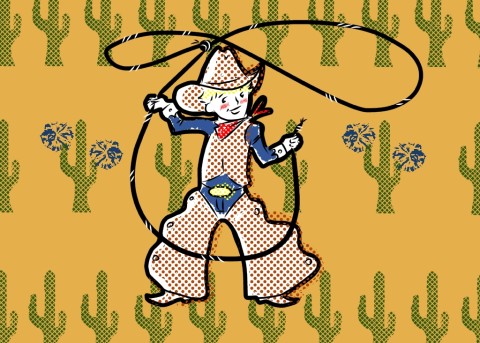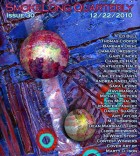When I was twelve I was the only boy in my class who dreamed of becoming a Dallas Cowboys cheerleader. My father bought the pom-poms from a sporting goods store: real ones, tinseled in silver and blue. He wasn’t exactly enthusiastic about my new hobby, but the last thing he wanted was to become a walking cliché of a single father, displacing his own disappointments, hectoring his son into something he wasn’t.
I spent recess behind the tool shed, alone, rehearsing routines of my own invention. No one bothered me or gave me trouble. They were terrified of my high kicks.
After dinner I performed the cheers for my father. He sat in his recliner and watched, fixing his face into something like a smile. Once, I wrote a cheer about my mother and it took all his strength to hold back his tears. I performed the cheer again the next night, curious to see what would happen. His face slackened and his eyes welled up, and afterward he asked me not to perform that cheer anymore.
The squad was signing autographs at a steakhouse downtown. In lieu of sleep, I imagined the conversations I would have with the girls, sharing our theories on modern cheer, hair products and teeth whiteners. My father took the afternoon off work to take me to the signing. We paid for a ticket and waited in line. The other fans were men with calendars, team yearbooks, cardboard cutouts carried under their arms like surfboards. At the front of the line I gave them my glitter-blue cowboy hat to sign. I was too nervous to say anything to the first four girls. They asked for my name and all I could manage was a moronic nod. The hat was passed to the last girl. With a trembling voice I told her I hoped to join the squad one day. She looked at me with a practiced smile. Let’s just hope you’re a late bloomer, she said. She handed back the signed hat and turned to receive the next set of fans. I walked over to my father who had drifted toward the doorway.
***
That’s called a slant route, my father said, following the receiver with his pointed finger. I kneeled in front of the flatscreen and watched the ball land in his oversized hands, the size of oven mitts. Three weeks had passed since the signing and I hadn’t even read the inscriptions on the hat. Did you notice the footwork on the drop back? It takes great footwork to become a quarterback. Kind of like cheering in a way, he said, looking to me for approval. I nodded like I agreed with him. He explained the workings of each formation, deposited facts about the players: their alma maters and legal histories. It was like listening to a gardener recite the Latin names of plants, but somehow the information was taking root. Look at this. See where the running back is lined up? That’s known as the wildcat offense, he said, wobbling my shoulder with his outstretched hand. The receiver went in motion and I closed my eyes. I pictured my mother in the backfield, taking the direct snap from the center. With the ball cradled in her arms she slashed through the defensive wall, barreling over a pair of linesman. The strong safety dove, missed, and she fended off the free safety with a vicious stiff arm. She bounced off a cornerback and broke into the open field, high-stepping along the hash marks—twenty, fifteen, ten, five—and I was streaking down the sideline beside her, waving my pom-poms, cheering her home. When I opened my eyes I realized the game had been stopped. A Cowboy was down on the ground. They replayed the tackle for the viewers: his head snapping back, body crumpling to the turf. My father watched soberly. The cheerleaders stood unmoving and the players kneeled in prayer. The team doctors hovered over him, held up fingers, then after a few minutes, at his request, they helped him to his feet, and like the professional that he was, he shook off the hurt and returned to the huddle.



 The core workshop of SmokeLong Fitness is all in writing, so you can take part from anywhere at anytime. We are excited about creating a supportive, consistent and structured environment for flash writers to work on their craft in a community. We are thrilled and proud to say that our workshop participants have won, placed, or been listed in every major flash competition. Community works.
The core workshop of SmokeLong Fitness is all in writing, so you can take part from anywhere at anytime. We are excited about creating a supportive, consistent and structured environment for flash writers to work on their craft in a community. We are thrilled and proud to say that our workshop participants have won, placed, or been listed in every major flash competition. Community works.